A Letter to a Traveler
Dear friends,
How are you doing? Hope everything is going well with you! At the transition of seasons, the “Mirror Gardens” has also experienced the changes of light, plants and space. In the past few months, we’ve been exploring, imagining about ways of perception in the future, trying to let different parallel artistic practices and thinking rest upon each other via the course of the everyday, just like the overlapping of different kinds of writings and the accumulations of geological layers.
While new “topographies” and “writings” are slowly emerging, we warmly invite you to come and wander at the Mirror Gardens in the daily opening time. We hope you all will pass through and feel the multitude of parallel worlds in various pace and from different perspectives. Let the dance of thoughts and the wandering of the body converge, and freely discover a space that belongs to you:
Zheng Guogu: Visionary World in a Changing State of Mind
Yangjiang Group: A Piece of Kuang Cao Bright Moon
“Borrowed Scenery” of Danh Vo:
Enzo Mari:1974’s autoprogettazione
Isamu Noguchi: Akari series
Dong pavilion
the shop 2018 edition No.3:
Michele Ciacciofera: The Translucent Skin of The Present
Wish you a bright and beautiful autumn, and hope to have you re-visit again in the daily process.
“Silent journeys” group, Mirror Gardens
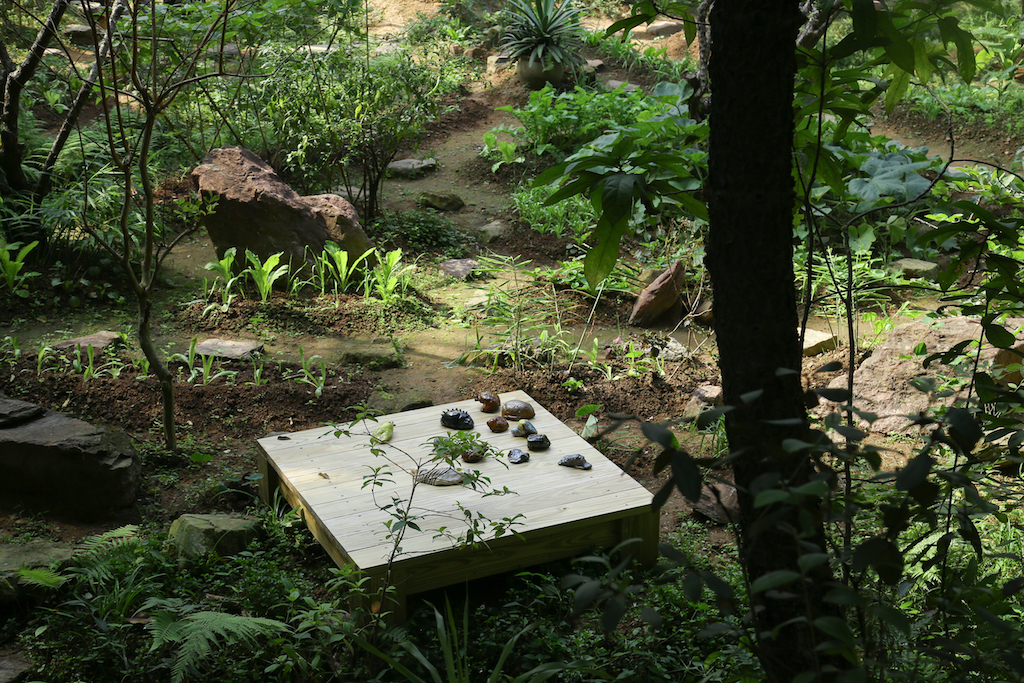
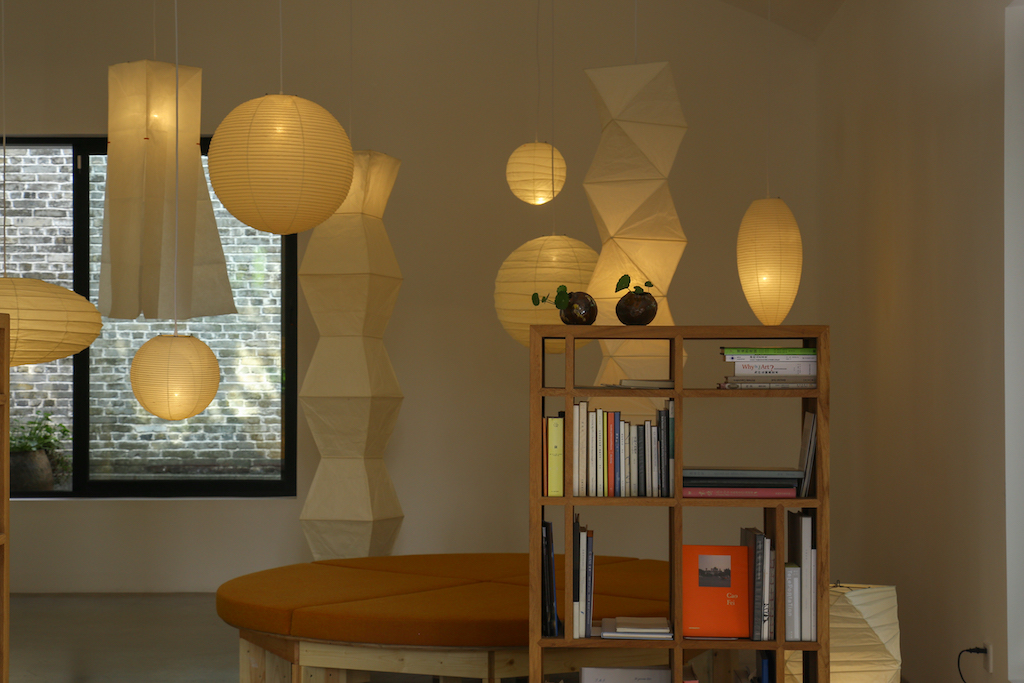
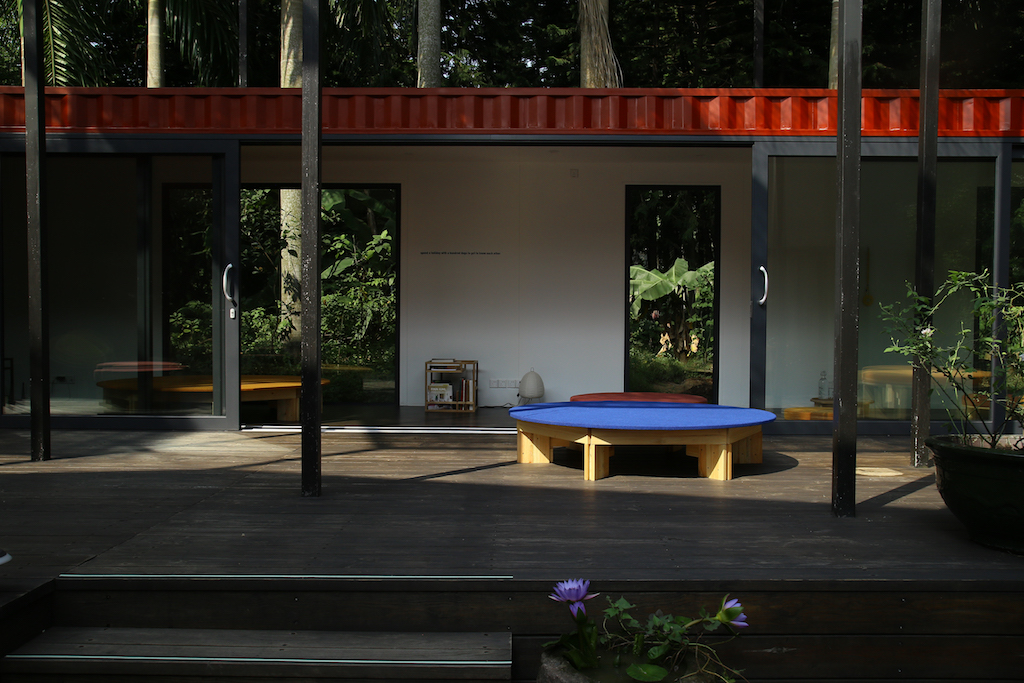
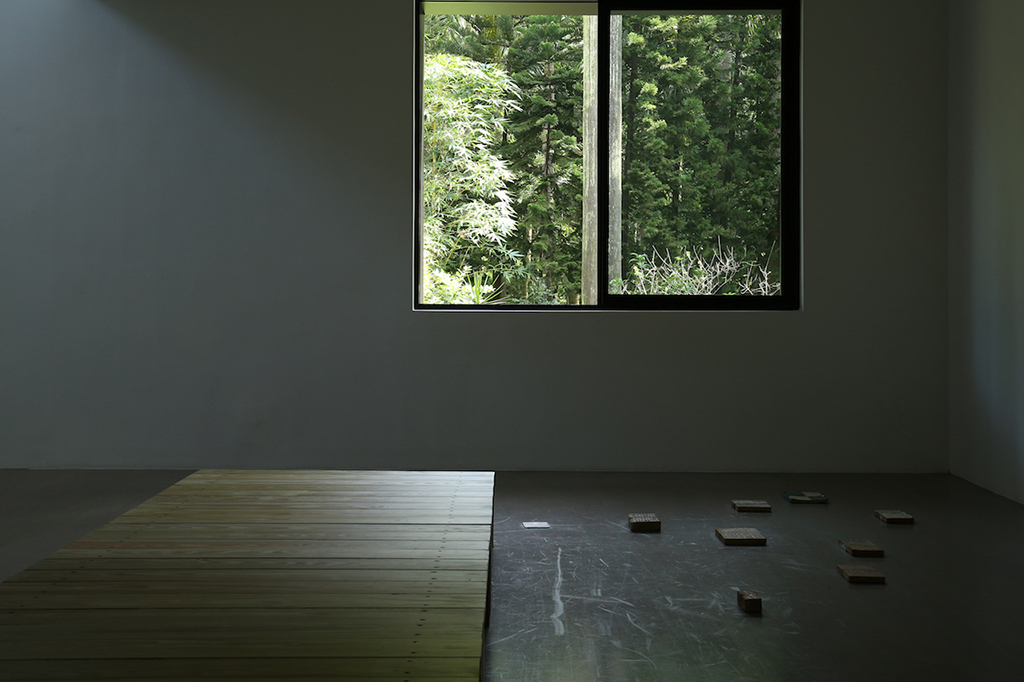
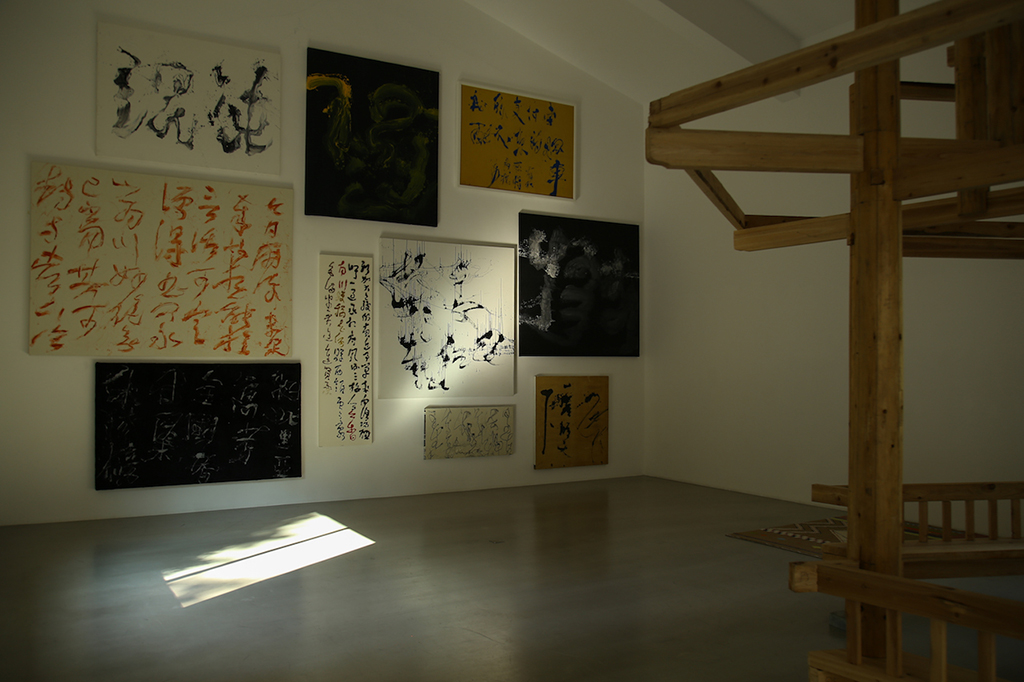
Mirrored Gardens view
– – –
Journeying, Tracing Back, Faint Clues, and a World of Entangled Quantum Particles
1
If, on an autumn day, you are traveling alone and stumble across this place, you will find yourself stepping into a scene that conjures a sense of déjà vu – the light, the wind, the steps. You will encounter artisans, potters, writers, ancient fossils, and a pavilion where you might stop to take a rest. Situated inside a dance with no choreography, you will be continuously changing positions. You will engage in the reading not only of books, images, and calligraphy, but also of the plants, the light, and the figures of other passersby. The forms and appearances of objects will emerge under the changing light, ceaselessly influencing the way in which you perceive your surroundings.
Time passes, layers of “geoloy accumulate”, written texts repeat and overlap, and from this, a world emerges in a form that could not have been anticipated, inviting our engagement and exploration. At this moment, what exists at Mirrored Gardens (镜花园) is not an exhibition, but a series of parallel yet interlacing worlds. There are remnants, from faint traces to direct signals, revealing what has accumulated and evolved in these worlds since the summer, worlds which have been built out of different entities and shaped by different groups. Within them, there also resides instances of energetic resonance and inarticulable dialogue, independent existences as well as the use of “borrowed scenery” (借景). What results is a comprehensive experience of an everyday consciousness.
2
“Borrowed Scenery,” Danh Vo: As we lean into the theoretical journey of Danh Vo’s artistic practice, we encounter the subjects of several of his deepest passions: Japanese-American artist Isamu Noguchi, the world of Italian designer and artist Enzo Mari, and the space of the Dong Pavilion. By way of the faintly discernible connections shared among these subjects, we embark upon an understanding toward the many layers of Danh Vo’s contemporary art practice. As Noguchi explained himself, the Akari light series (Akari meaning “light” or “brightness” in Japanese) “allows us to feel the presence of sunlight during the dark night, its warmth continuing to linger indoors.” Noguchi’s conception of light, then, transcends the general surface beauty of form, and penetrates straight into human nature’s deep longing for warmth. The design practice behind Enzo Mari’s autoprogettazione (or “self design”), presented in 1974, is also an emphatic return to the basic needs of humans, suggesting a reversion to an active relationship with the material world. The Dong Pavilion is a traditional space for the Dong people, a structure used in field labor, rest, and congregating. The cedar trees in the mountains, alongside the children, grow taller, and once the trees are tall enough to be used for their wood, they are transformed into homes for the next generation, as well as pavilions and drum towers for congregation. The actual process of woodworking becomes an abiding support during this transition into a different stage of life. Danh Vo’s practice of contemporary art, which started in the realm of his personal experiences, has since journeyed around the entire world, engaging in an investigation of the complicated faces of history—especially in relation to identity and belonging, authority and ownership, the role of personal relationships, and the survival of other human groups—and focusing in on the question of how humans might achieve a state of freedom in today’s world. This trail of questions has brought together Noguchi’s Akari light series, Enzo Mari’s autoprogetttazione furniture, and the Dong Pavilion, ushering them into the Mirrored Gardens. Along this winding path of investigation, different lines of history are being reconnected and reconstructed, as well as colliding together, slowly forming our ideas about the possibilities of being alive today.
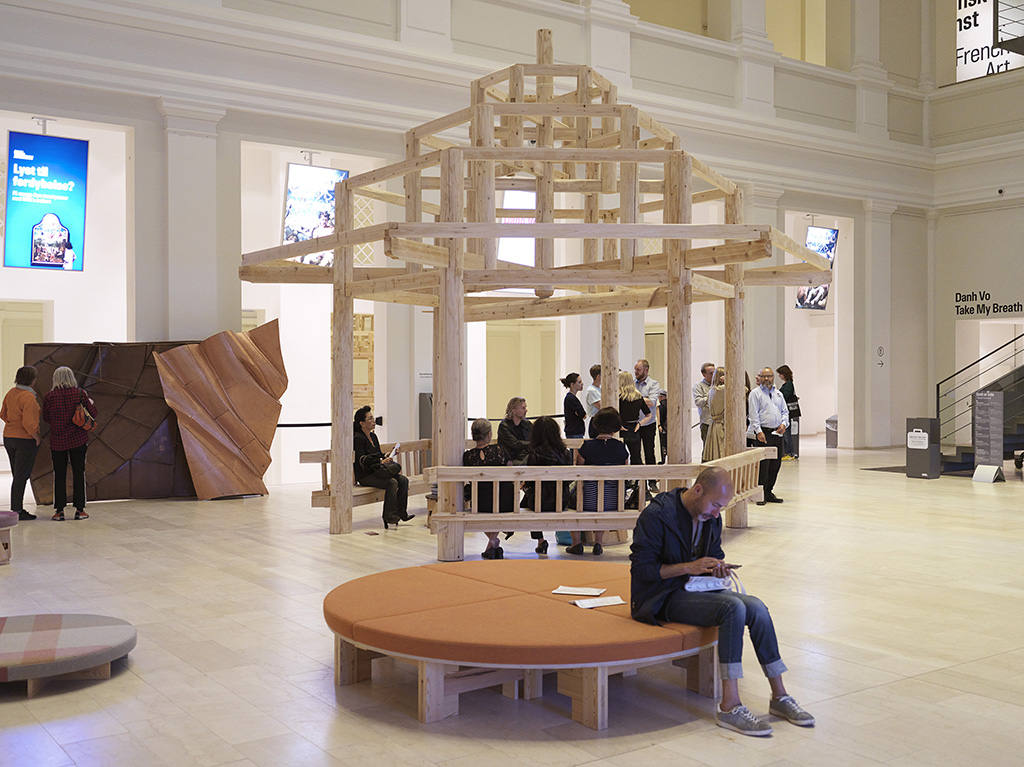 Danh Vo: Take My Breath Away, 2018, Exhibition view at SMK-National Gallery of Denmark, Copenhagen, 2018. Image courtesy of the artist.
Danh Vo: Take My Breath Away, 2018, Exhibition view at SMK-National Gallery of Denmark, Copenhagen, 2018. Image courtesy of the artist.
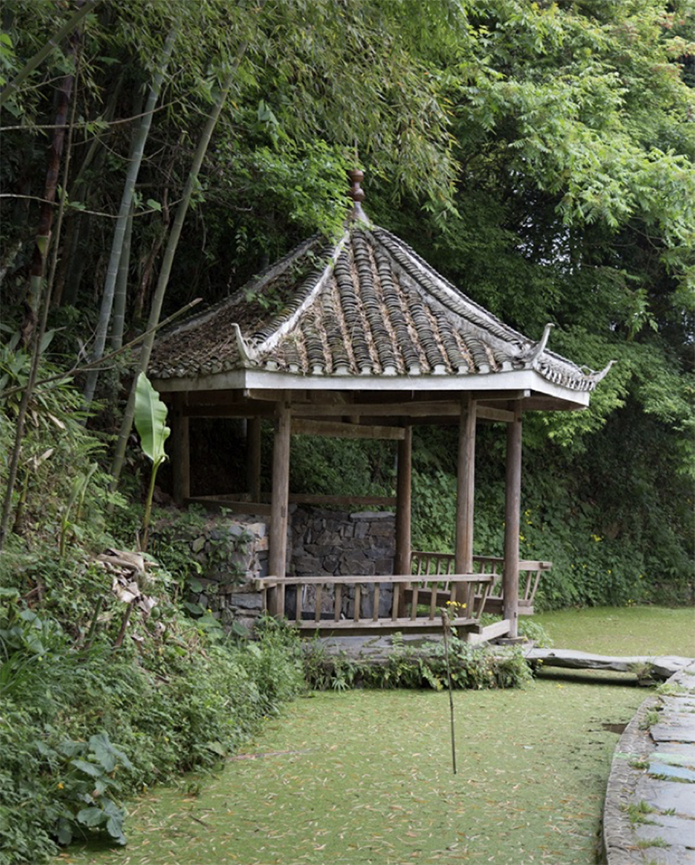 Dong Pavilion, Di Men, Guizhou. Image: Xiao Chang
Dong Pavilion, Di Men, Guizhou. Image: Xiao Chang
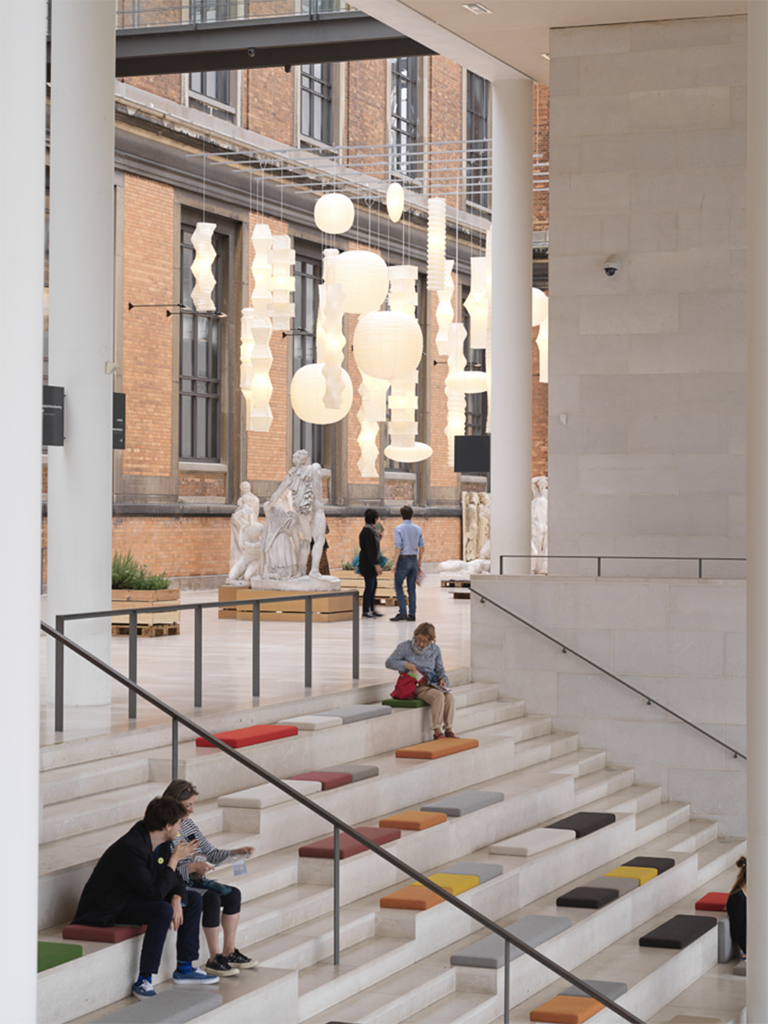 Danh Vo: Take My Breath Away, 2018, Exhibition view at SMK-National Gallery of Denmark, Copenhagen, 2018. Image courtesy of the artist.
Danh Vo: Take My Breath Away, 2018, Exhibition view at SMK-National Gallery of Denmark, Copenhagen, 2018. Image courtesy of the artist.
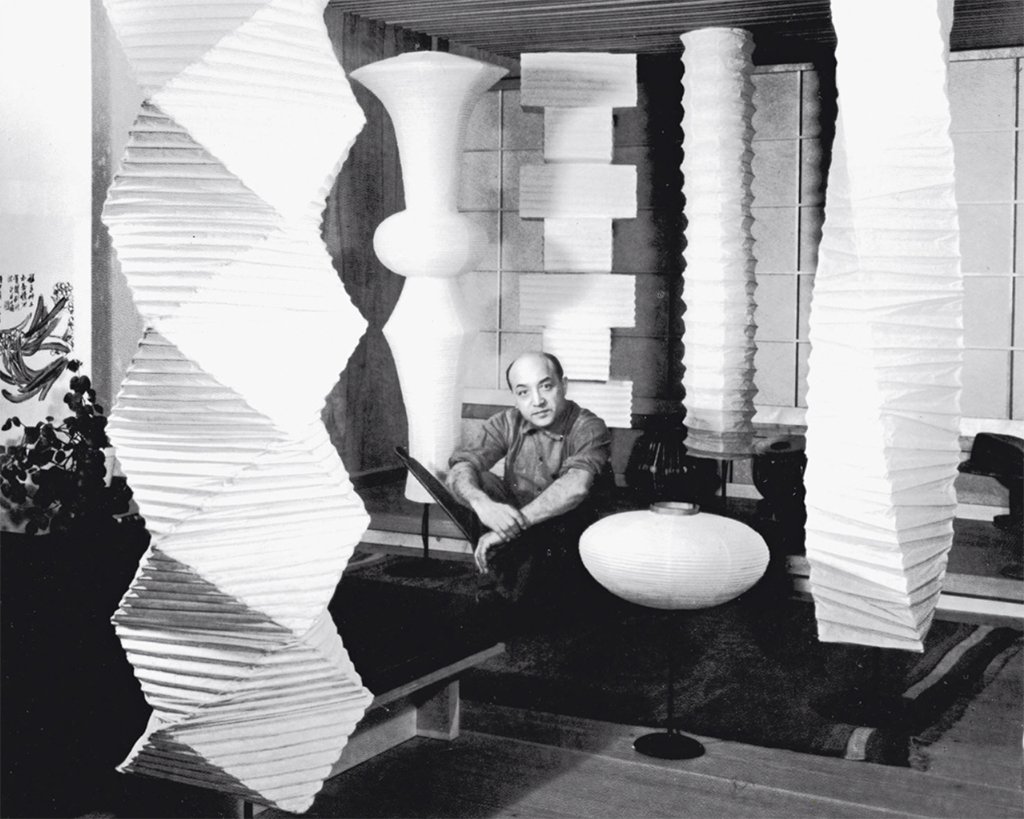 Isamu Noguchi and his Akari light series, 1950s. Reference image.
Isamu Noguchi and his Akari light series, 1950s. Reference image.
 Enzo Mari: autoprogettazione, 1974. Design diagram and photo of artist with models. Reference image.
Enzo Mari: autoprogettazione, 1974. Design diagram and photo of artist with models. Reference image.
This conception of the Mirrored Gardens also affects the space-time in which “the shop” exists. Amid the various perceptions and modes of appreciation aroused by each individual’s life experiences, the surroundings, including that of “the shop,” become fluid and dynamic. Therefore, the spatial form of “the shop” possesses a dynamic relationship with the “forms” of the objects it contains. Those “objects in use” reveal the functional evolution and cultural meaning contained within “form,” which is a product of a cultural history, containing both unions and ruptures. The stories condensed within these objects, under our current observation and use, and in their response to reality and the possibilities they suggest in our lives, stimulate and activate the idea of “life today.”
3
Where can we find art that relates to how humans might protect, preserve, and nurture the energies of life? What medium can be used to pass on those codes relating to the culture of human survival? What do “creating” and “writing” mean in this process?
In our driftless and confused society, the writings of Yangjiang Group (阳江组合) are frequently interpreted as iconic metaphors reflecting our everyday reality, hinting at the unpredictability and mystery of life. An important medium in the survival and passing down of Chinese culture, calligraphy is ever-present in the artistic practice of the Yangjiang Group, combining with all types of disparate social behaviors. The collective fermentation of our daily wine, tea, and language across time, then, has become the overarching context in which this calligraphy exists. The content of these calligraphic works, rather than being merely a repetition of calligraphic aesthetics, are frequently a coalescence of the observation and penetration of the complete interactive process between human behavior and the world, distilled into a mantra. These everyday writings, completed at different points in time, converge into a landscape, a space resembling a stele forest. From the space of the Dong Pavilion, the content of this calligraphy gradually becomes simply the “state” of our tim
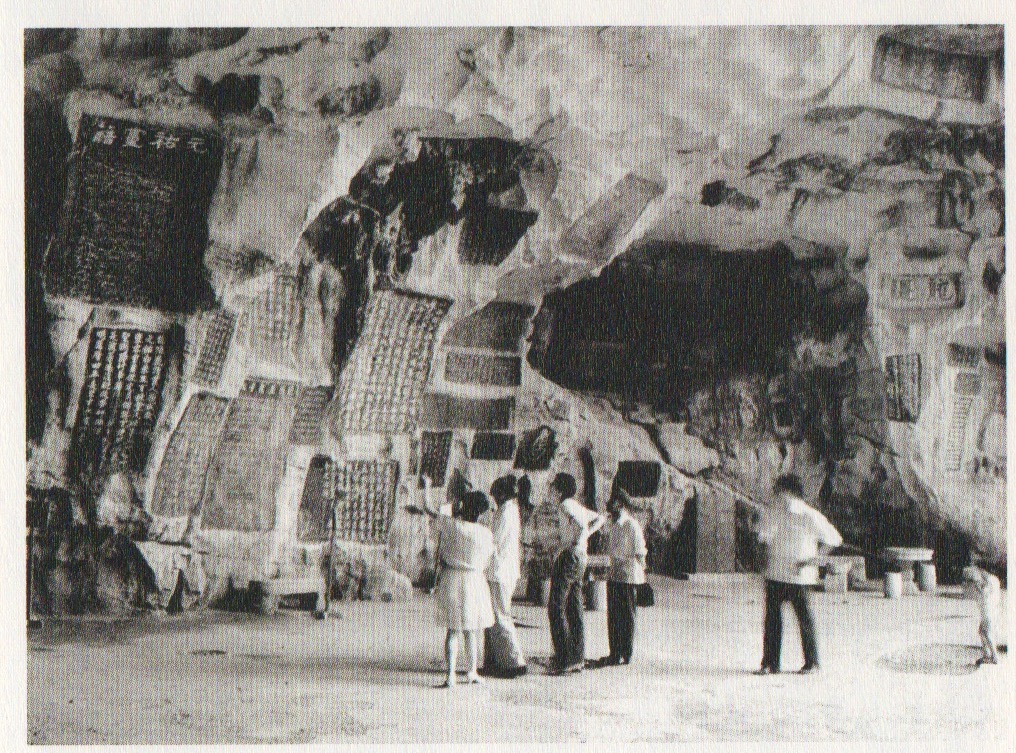 Guihai Steele Forest. Reference image.
Guihai Steele Forest. Reference image.
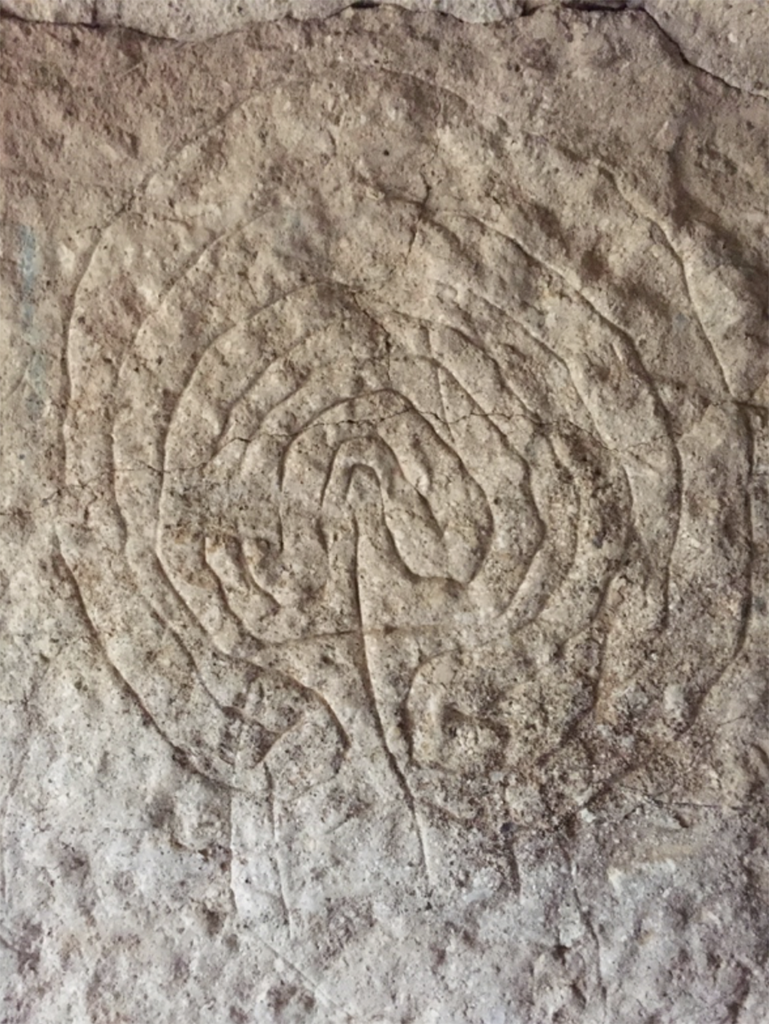 Prehistoric carvings left on “Domus de Janas” stone structures in Sardenia, Italy.
Prehistoric carvings left on “Domus de Janas” stone structures in Sardenia, Italy.
Image: Hu Fang
Another type of writing that is presented comes from Italian artist Michele Ciacciofera. The artist’s Library of the Encoded Time is rife with both urgency and yearning toward languages that are facing imminent extinction. In Ciacciofera’s eyes, each individual’s identity is forged from the history of our predecessors, written and narrated to us through a system of imaginative symbols. Within this system, at the same time, there exists a process of constant rewriting. His deep interest in fossils can almost be interpreted as a metaphor: creation is a complicated and organic process of evolution.
Here, the energy presented by calligraphy transforms the space into a place that invites reading and dancing – the dance of thought manifests as a physical dance, your footsteps moving upon the platform of the space, light and heavy, swift and slow, propelled by strands of feeling and thought.
4
When our gaze extends even farther into the distance, the sound of trickling water seems to indicate a shift in the setting, and in the body’s orientation. In the recent Visionary World in a Changing State of Mind (心能转境) series, Zheng Guogu (郑国谷) places the observational center of energy at the “heart chakra.” Located at the axis of the “chakra system,” the “heart chakra” is generally considered to be the source of emotional energy. Zheng views the expansion of the “heart chakra” to be a process resulting from an individual’s correspondence with different settings, and suggests that by using one’s heart to correspond with art’s various forms, the viewer will undergo an evolution in their mental state, leading to the opening up of new dimensions of personal perception. Alongside these explorations of energy, in Visionary World in a Changing State of Mind, Zheng is also concerned with placing paintings within types of everyday environments, as well as placing scenes depicted in paintings into the real environment, such as bringing willows and flowing streams into the space of Mirrored Gardens. The sound of the water and the voice of the heart are placed in mutual reflection and harmony, through which the possibilities of mutual transformation between one’s mental state and the environment can be explored.
 The water scene constructed by Zheng Guogu in “Liao Garden.” Image provided by the artist.
The water scene constructed by Zheng Guogu in “Liao Garden.” Image provided by the artist.
This type of experimentation uses one’s own self as the medium, through which one experiences flows of energy that cannot be articulated with language. And, in the end, the endeavor invites other entities to participate in testifying to this experience. Perhaps we are merely intertwining particles in this quantum world, ceaselessly searching for a vector that can be the trajectory for our life energy.
When twilight descends, humans slow down their pace, the traces of their paths gaining clarity and dynamism. When we casually shut a book, we continue nonetheless on our autumnal journey, all of us unintentional visitors who have entered a book, the morning light fading, pulling farther and farther away.
(“Silent journeys” group, Mirror Gardens )
Daily Opening Time:
11:00 – 17:00, Wednesday to Sunday
Closed on Mondays, Tuesdays
Address: Mirrored Gardens, Si Hai Ma Shu, Hualong Agriculture Grand View Garden (化龙农业大观园,四海马术), Panyu District, Guangzhou
Tel: 020-31043759
Email: mail@mirroredgardens.art
Warm Reminders:
“Gatherings” in similar forms will recur at the Mirror Gardens in the daily process with no set schedules, we kindly ask you to follow our “交叉小径 (forking paths)” public WeChat account and Mirror Garden’s alternate WeChat account to receive updates in the future.
- Mirrored Gardens, Photo: Wen Peng, Courtesy of Mirrored Gardens Archive
- Mirrored Gardens, Photo: Wen Peng, Courtesy of Mirrored Gardens Archive
- Mirrored Gardens, Photo: Wen Peng, Courtesy of Mirrored Gardens Archive
- Mirrored Gardens, Photo: Wen Peng, Courtesy of Mirrored Gardens Archive
- Mirrored Gardens, Photo: Wen Peng, Courtesy of Mirrored Gardens Archive
- Mirrored Gardens, Photo: Wen Peng, Courtesy of Mirrored Gardens Archive
- Mirrored Gardens, Photo: Wen Peng, Courtesy of Mirrored Gardens Archive
- Mirrored Gardens, Photo: Wen Peng, Courtesy of Mirrored Gardens Archive
- Mirrored Gardens, Photo: Wen Peng, Courtesy of Mirrored Gardens Archive
- Mirrored Gardens, Photo: Wen Peng, Courtesy of Mirrored Gardens Archive
- Mirrored Gardens, Photo: Wen Peng, Courtesy of Mirrored Gardens Archive
- Mirrored Gardens, Photo: Wen Peng, Courtesy of Mirrored Gardens Archive
- Mirrored Gardens, Photo: Wen Peng, Courtesy of Mirrored Gardens Archive
- Mirrored Gardens, Photo: Wen Peng, Courtesy of Mirrored Gardens Archive
- Mirrored Gardens, Photo: Wen Peng, Courtesy of Mirrored Gardens Archive
- Mirrored Gardens, Photo: Wen Peng, Courtesy of Mirrored Gardens Archive
- Mirrored Gardens, Photo: Wen Peng, Courtesy of Mirrored Gardens Archive
- Mirrored Gardens, Photo: Wen Peng, Courtesy of Mirrored Gardens Archive
- Mirrored Gardens, Photo: Wen Peng, Courtesy of Mirrored Gardens Archive
- Mirrored Gardens, Photo: Wen Peng, Courtesy of Mirrored Gardens Archive
- Mirrored Gardens, Photo: Wen Peng, Courtesy of Mirrored Gardens Archive
- Mirrored Gardens, Photo: Wen Peng, Courtesy of Mirrored Gardens Archive
- Mirrored Gardens, Photo: Wen Peng, Courtesy of Mirrored Gardens Archive
- Mirrored Gardens, Photo: Wen Peng, Courtesy of Mirrored Gardens Archive
- Mirrored Gardens, Photo: Wen Peng, Courtesy of Mirrored Gardens Archive
- Mirrored Gardens, Photo: Wen Peng, Courtesy of Mirrored Gardens Archive





























